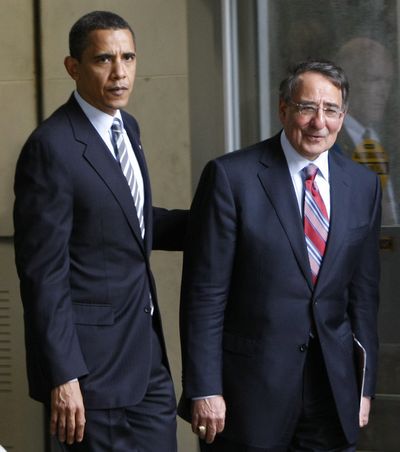U.S. shows Pakistan evidence on Faisal Shahzad
Times Square bomb suspect tied to Taliban, officials say

WASHINGTON – Senior U.S. officials used an urgent meeting with Pakistan’s president to present a dossier on accused terror suspect Faisal Shahzad, including a detailed chart describing his contacts with the Pakistani Taliban before his attempt to detonate an explosives-laden vehicle in Times Square, officials said.
The evidence was part of an emphatic American message that the bombing attempt had “raised the stakes,” as one official put it. It was delivered last week in a visit to Islamabad by White House National Security Adviser James L. Jones and CIA Director Leon E. Panetta, who said Pakistan needed to intensify its crackdown against the Pakistani Taliban and other militant groups.
Originally, officials in Islamabad denied that the Pakistani Taliban was involved in the bombing attempt. But in the days since Jones and Panetta met with President Asif Ali Zardari and other leaders, Pakistani officials have begun to acknowledge that Pakistani Taliban provided support to Shahzad.
The Times Square incident has brought into sharp relief the conundrum the U.S. faces in responding to the growing threats emanating from the stew of militants groups based in Pakistan’s tribal areas.
U.S. officials have become convinced that Pakistani Taliban, after primarily focusing on attacks against the Pakistani government, are increasingly seeking ways to strike U.S. targets. The group has formed closer links with al-Qaida and has seemed to adopt its goal of striking the U.S. on its own territory.
“We have been lucky in the past, but our luck will run out and in the future, we are likely to face successful attacks,” said a senior U.S. intelligence official.
The evidence, which included photographs of militants suspected of assisting Shahzad, was shown to Zardari and Gen. Ashfaq Pervez Kayani, the army chief of staff, along with other Pakistani officials, U.S. officials said.
Jones and Panetta were attempting to persuade the Pakistanis that the U.S. had hard evidence that Shahzad had received support from the Pakistani Taliban, known as Tekrik-e-Taliban, or TTP, a violent militant group based in the country’s tribal regions, the officials said.
The chart, which was assembled by U.S. intelligence agencies, “showed who all he had contacts with,” one official said, and drew “clear links between Faisal Shahzad and the TTP leaders in Pakistan.”
Panetta and Jones stressed that there would be “inevitable pressure” on the United States to take action if there another attack traceable to Pakistan that resulted in U.S. casualties, officials familiar with the talks said.
Jones and Panetta did not spell out possible action the U.S. might take, the official said. The delegation did not rule out military action, for example, but they didn’t talk about it specifically, he added.
Whether the U.S. responded militarily or with lesser steps would depend on the circumstances of the attack and the strength of the evidence implicating militants in Pakistan, several officials added.
The White House originally considered warning Pakistan about the consequences of another attack in a confidential letter from President Barack Obama to Zardari, but ultimately decided to dispatch Jones and Panetta to deliver the message in person.